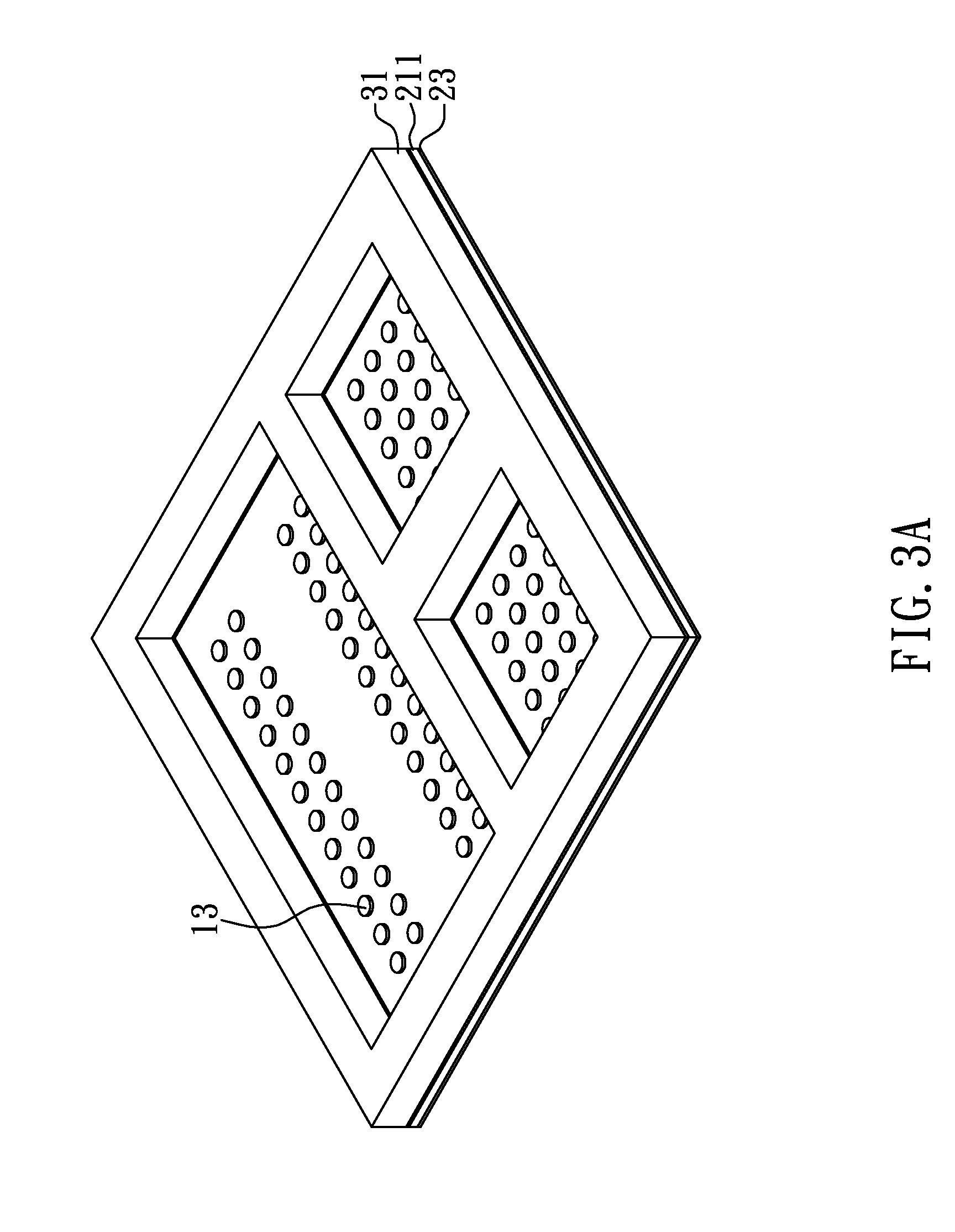Multi-cavity wiring board for semiconductor assembly with internal electromagnetic shielding
a technology of electromagnetic shielding and wiring board, which is applied in the direction of printed circuit aspects, cross-talk/noise/interference reduction, and semiconductor/solid-state device details, etc., can solve the problems of increasing serious undesirable interference, unable to offer proper emi shielding or effective electromagnetic protection at the wiring board level, and unable to meet the requirements of the application
- Summary
- Abstract
- Description
- Claims
- Application Information
AI Technical Summary
Benefits of technology
Problems solved by technology
Method used
Image
Examples
embodiment 1
[0027]FIGS. 1-8 are cross-section views showing a method of making a multi-cavity wiring board that includes a careless substrate, an adhesive, and a stiffener having multiple apertures with lateral shielding sidewalls in accordance with an embodiment of the present invention.
[0028]As shown in FIG. 8, multi-cavity wiring board 100 includes stiffener 31, adhesive 15 and coreless substrate 201. Stiffener 31 includes multiple apertures 311 with lateral shielding sidewalls and is affixed on coreless substrate 201 using adhesive 15. In this illustration, coreless substrate 201 includes electrical pads 13, first dielectric layer 211, first conductive traces 231, second dielectric layer 251 and second conductive traces 271. First conductive traces 231 are electrically connected to electrical pads 13 for signal routing, and also provide an electrical interconnection between electrical pads 13 and stiffener 31 for grounding the lateral shielding sidewalls of apertures 311.
[0029]FIG. 1 is a c...
embodiment 2
[0044]FIGS. 11 and 11A are cross-sectional and top views, respectively, of another multi-cavity wiring board 200 with plated through holes 411 as electrical connection between metallic sidewalls of apertures 311 and electrical pads 13 in accordance with another embodiment of the present invention.
[0045]In this embodiment, multi-cavity wiring board 200 is manufactured in a manner similar to that illustrated in Embodiment 1, except that the metallic sidewalls of apertures 311 are electrically connected to electrical pads 13 by first conductive traces 231 and plated through holes 411 that extend from conductive layer 313 on the top surface of stiffener 31 to first conductive traces 231 through stiffener 31, adhesive 15 and first dielectric layer 211 in vertical directions. Plated through holes 411 are formed by forming through holes 401 after attaching stiffener 31 and then depositing connecting layer 402 on the sidewall of through holes 401 during depositing first conductive traces 23...
embodiment 3
[0047]FIGS. 12-18 are cross-section views showing a method of making yet another multi-cavity wiring board with electrical pads, thermal paddles, stoppers and placement guide exposed from metallic apertures of a stiffener in accordance with yet another embodiment of the present invention.
[0048]For purposes of brevity, any description in above Embodiments is incorporated herein insofar as the same is applicable, and the same description need not be repeated.
[0049]FIGS. 12 and 12A are cross-sectional and top views, respectively, of the structure with stoppers 16 formed on metal layer 11 of laminate substrate. As illustrated in above embodiments, the laminate substrate includes metal layer 11, first dielectric layer 211 and support plate 23. Stoppers 16 can be formed by electrolytic plating of metal on metal layer 11 using photolithographic process. In this illustration, each stopper 16 consists of plural metal posts in a rectangular frame array with a thickness of 35 microns and confo...
PUM
 Login to View More
Login to View More Abstract
Description
Claims
Application Information
 Login to View More
Login to View More - R&D
- Intellectual Property
- Life Sciences
- Materials
- Tech Scout
- Unparalleled Data Quality
- Higher Quality Content
- 60% Fewer Hallucinations
Browse by: Latest US Patents, China's latest patents, Technical Efficacy Thesaurus, Application Domain, Technology Topic, Popular Technical Reports.
© 2025 PatSnap. All rights reserved.Legal|Privacy policy|Modern Slavery Act Transparency Statement|Sitemap|About US| Contact US: help@patsnap.com



